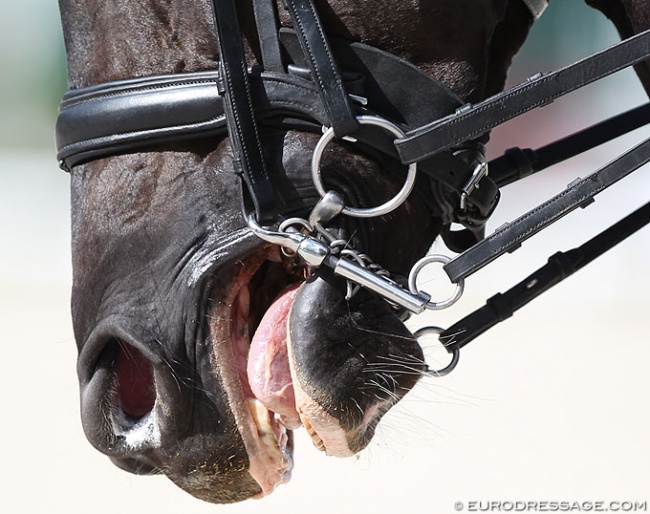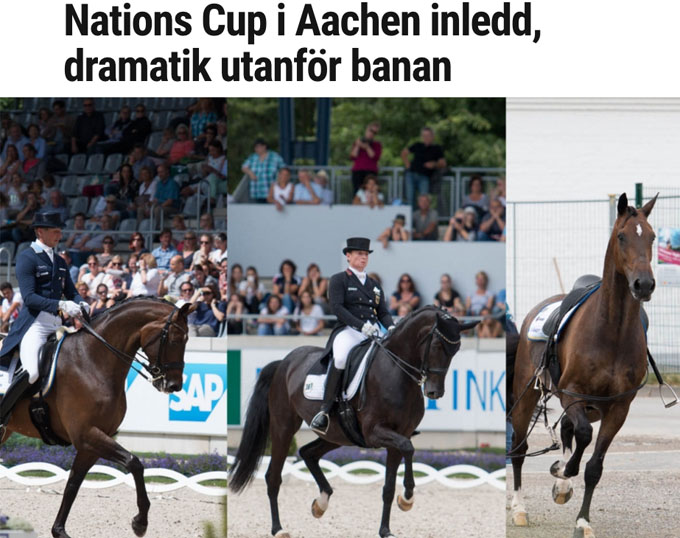
At the World Horse Welfare (WHW) General Assembly 2018, held 31st October 2018, Richard Davison, a WHW Trustee gave a presentation on the topic: ” Equestrian sport: the good, the bad and the ugly”.
The International Society for Equitation Science (ISES) congratulates WHW for including this topic in this year’s assembly and is highly supportive of many of Mr Davison’s points e.g., regarding the importance of getting competition horses out to graze and the role of learning theory in horse training, in particular with regard to the importance of the removal of pressure. However, the Society also finds that the presentation included a number of incorrect claims and insinuations and hereby encourages WHW to correct this misinformation in a public statement to prevent further misinterpretation that may damage the welfare of sport-horses.
The presenter stated that the presentation was based on “evidence-based facts” [quotes from the presentation in italics]. However, the presentation was not based on peer-reviewed evidence.
”The FEI like any governing body has a duty to underpin the rules and regulations based on evidence, factual information and robust science”
”Sticking with the current crisis in the dressage world with tight nosebands, I’ve looked at the current science.”
”What I conclude from the various studies is that some of the actual conclusions, when you read the small print, are actually conflicting, and when you read the detail you get mixed messages or some of the methodology is weak and lacks appropriate numbers in terms of ages and types of horses when applied to equestrian sports.”
However, one of the most recent peer-reviewed scientific publications on this topic includes 3,143 competition horses checked post-competition. In the study, a highly significant correlation between tight nosebands and oral lesions was reported. If a noseband was loosened from the tightest category to the medium category, a 34% decrease in oral lesions was detected. The same effect was seen going from the medium category to the loosest category: additional 34%. Thus, overall, a 68% decrease in oral lesions was seen in loosening from the tight category to the loosest category. The study also showed that oral lesions were a particular problem in dressage in general and increasingly at high level dressage competitions (Uldahl & Clayton, 2018).
Some equine research questions demand large numbers of horses to address them, others do not. This is why seemingly modest numbers of horses can produce statistically valid results. Furthermore, the role a horse plays in the human domain is immaterial when identifying the behaviours that horses, as a species, are denied by restrictive nosebands. Being a competition horse does not mean that the horse can lick, chew, yawn and swallow more easily than non-competition horses.
The presenter further comments on the use of measurement taper gauges to assess noseband tightness:
”To provide again another high profile example of one of the studies, one of the research groups came up with the proposal of measuring noseband tightness using this gadget there on the left” (ISES taper gauge shown on a slide)
”Now, at first glance this seems a totally logical idea to have a standardised measurement tool, but besides from the fact that this group’s recommendation of where to measure is also countered by other very good scientists who suggest that the front of the nose is not the most relevant place to measure, it also relies on a steward pushing a bright green piece of plastic up a horse’s nose [audience laughs], well not the nose but the face.”
ISES is not aware of any peer-reviewed papers suggesting that the frontal plane of the nose is not a relevant place to measure. However, Doherty et al (2017a) identified the areas of the frontal nasal plane (left and right nasal bones) and other bony prominences, such as the mandibular rami, as the locations at which nosebands will exert greatest force against tissue, while other areas beneath the noseband, such as at the side of the face, are subjected to very little pressure from nosebands, due to the shape of the head.
In a statement about the dangers of checking noseband tightness in dressage horses, Mr Davison also implied a strong link between the ISES taper gauge and an incident at a competition in Aachen, where a dressage horse took flight because the bridle had become dislodged.
”Now, that might be fine for a riding school horse, but when it comes to sharp competition horses just coming out of the crowded arena with the audience clapping and a lot of noise, it is a highly charged environment, and you can see[pointing at the screen] in the middle picture is a steward doing the post competition post-test check of a dressage horse, this is a few seconds later [pointing at a horse running in panic bridle lost hanging around its neck]. That’s at Aachen, one of the top shows in the world."
”So in the event of this happening [pointing from left (ISES taper gauge) to right (horse without bridle)] what I ask is the costly personal injury claim, or the claim to this very expensive horse. Who is going to be liable? Is it the FEI? Is it the organising committee? Or is it the manufacturer of the gadget?” [pointing at the taper gauge]. I just hope that the manufacturer of the gadget has some good product liability, [then more quietly] or everyone has some good product liability in place.”

https://www.horseandhound.co.uk/news/olympic-horse-bolts-bridle-accidentally-removed-tack-check-627122
The statement that noseband checks cannot be performed on high-level competition horses seems to be based solely on the presenter’s own experience, as the sport-horses in the published studies have shown a high degree of compliance. In the study published by Uldahl & Clayton (2018), horses were examined by stewards post-competition and involved 1,383 dressage horses, including high level horses. No accidents or problems were encountered collecting the data for this study at events at all levels and disciplines (Personal communication, Mette Uldahl 2018). In another study, 737 horses at national and international competitions across a range of disciplines and including 3* dressage horses were found to tolerate the noseband check as part of the post-competition tack check (Doherty et al., 2017b).
The ISES therefore encourages WHW to clarify that:
- there is strong scientific evidence, based on a large number of sport-horses, indicating a clear link between tight nosebands and oral lesions,
- there are currently no records of dangerous situations arising from the use of taper gauges for measuring noseband tightness on nearly 4,000 sport-horses, and
- there was no taper gauge involved in the incident in Aachen.
The ISES expects that it is the core interest of a horse welfare organisation, such as WHW, to present scientific evidence and horse welfare initiatives, including the ISES and other taper gauges, in a factual and correct way.
To quote the presenter:
”We are in changing times. Where will our future equestrian stars get their guidance from?”
The ISES hopes that scientific, veterinary and horse welfare organisations can cooperate to improve the communication of research results and thereby enhance knowledge and ultimately improve horse welfare across all equestrian disciplines.
On behalf of the ISES,
Janne Winther Christensen
Honorary President
Presidents@equitationscience.com
To see what was exactly said at the 2018 World Horse Welfare Annual Conference, check out the video which features Davison's speech (starting at 45min25)